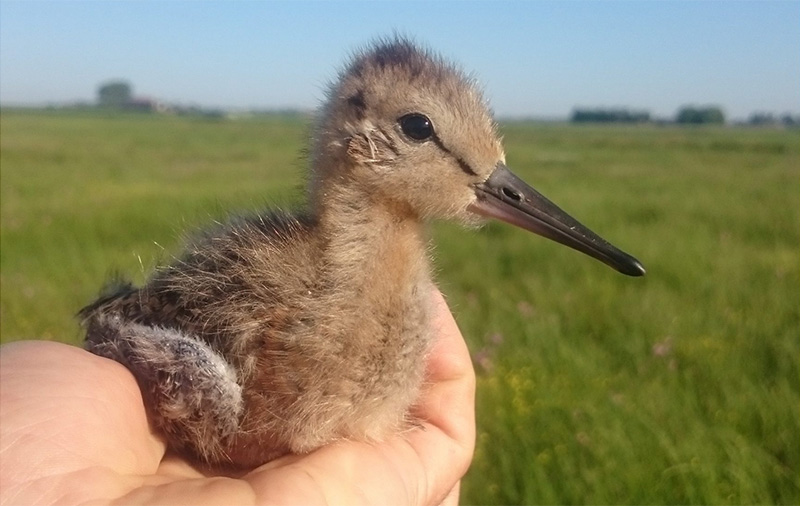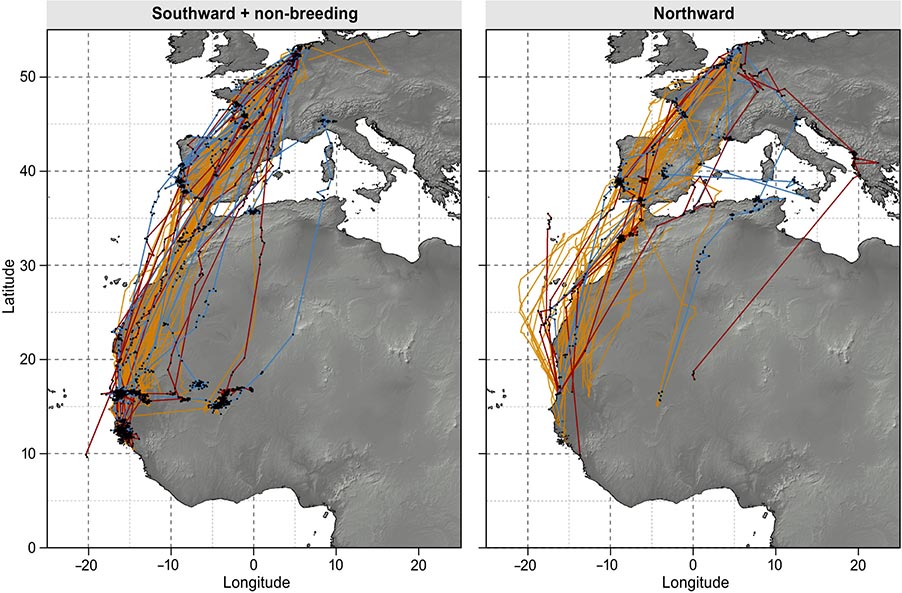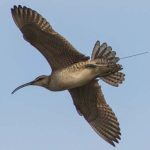← Back
Juveniles black-tailed godwit tracked

Among Black-tailed godwits breeding in the Netherlands, individual adults are consistent in their migratory timing and destination. But these behaviours vary considerably among adults, raising questions about how these differences arise. Do adults form their migratory habits when they are juveniles? Why, and how? Two mechanisms are suspected: that godwits inherit behaviour from parents (genetics or epigenetics), or that godwits adapt to the environment they encounter during their youth (plasticity).
Following up on their previous work, a research team from the University of Groningen recently published a study that delves into these questions. The researchers simultaneously tracked juvenile and adult continental Black-tailed godwits from the Netherlands on their south- and northward migrations.
In both 2016 and 2017, the team deployed 40 solar-powered 5g Argos PTT on juveniles, for a total of 80 transmitters. There is a high rate of mortality in juveniles before their first southward migration, but these 80 transmitters yielded migratory tracks for 28 juveniles. The researchers also put transmitters on adult godwits, deploying 32 solar-powered 9.5g Argos PTT in 2015 and 2016, and 4 of 5g in 2017.
The resulting tracking data was meant to help investigate the two proposed mechanisms. If godwit migration is shaped by the environmental context, godwits of different ages would be expected to display different migratory behaviour. If godwit migratory behaviour is inherited, juveniles and adults from the same breeding areas would be expected to display similar behaviours.
The study examined whether differences in the migration routes, timing and mortality rates of juveniles were related to either their hatch date or their hatch year. It also compared the routes, timing and mortality rates of juveniles and adults from the same breeding areas during the same years to assess whether individual differences among godwits may also have an inherited basis.

The timing of the first southward departure of juveniles was clearly related to hatch date. However, none of the other migratory behaviours – route, destination, duration, mortality – were correlated with hatch date. The migrations of juveniles did share some other features unrelated to hatch date or hatch year: late departure, many non-stop flights to West Africa, and higher mortality rate compared to adults. Some juveniles also tried out novel routes or stopover locations, without apparent negative consequences.
The individual differences observed among adult godwits therefore do not appear to be present at hatch or during a godwit’s first migration. Moreover, adults and juveniles from the same breeding areas did not show similarities. The data thus fails to support the inheritance hypothesis, though additional tracking focused on pairs of juveniles and parents, or on groups of siblings, would be needed to rule the possibility out entirely.
Based on this recent collection of tracking data, it is more likely that Black-tailed godwit juveniles change their migratory behaviour later in life – at one year of age or older – in response to environmental conditions.
Reference
- Verhoeven, M. A., Loonstra, A. H. J., McBride, A. D., Kaspersma, W., Hooijmeijer, J. C. E. W., Both, C., Senner, N. R., & Piersma, T. (2021). Age-dependent timing and routes demonstrate developmental plasticity in a long-distance migratory bird. Journal of Animal Ecology, 00,1–14. https://doi.org/10.1111/1365-2656.13641
Main Photo: a juvenile black-tailed godwit (credit M. A. Verhoeven)

